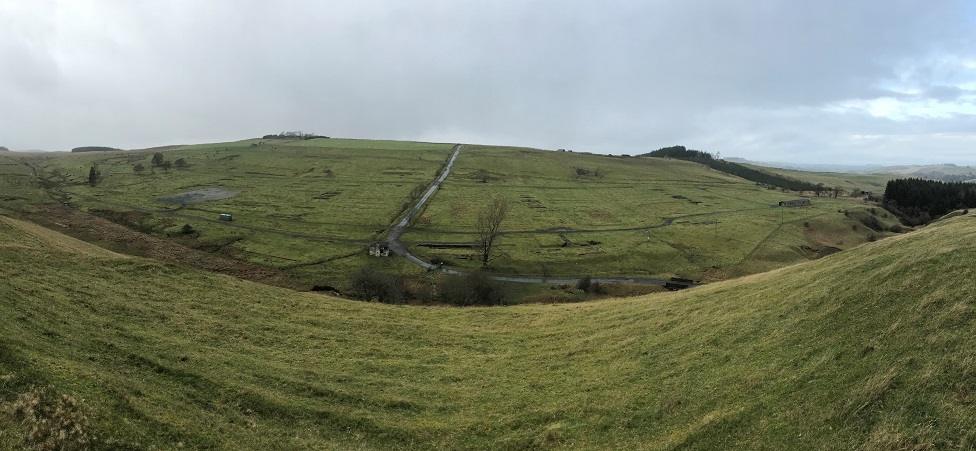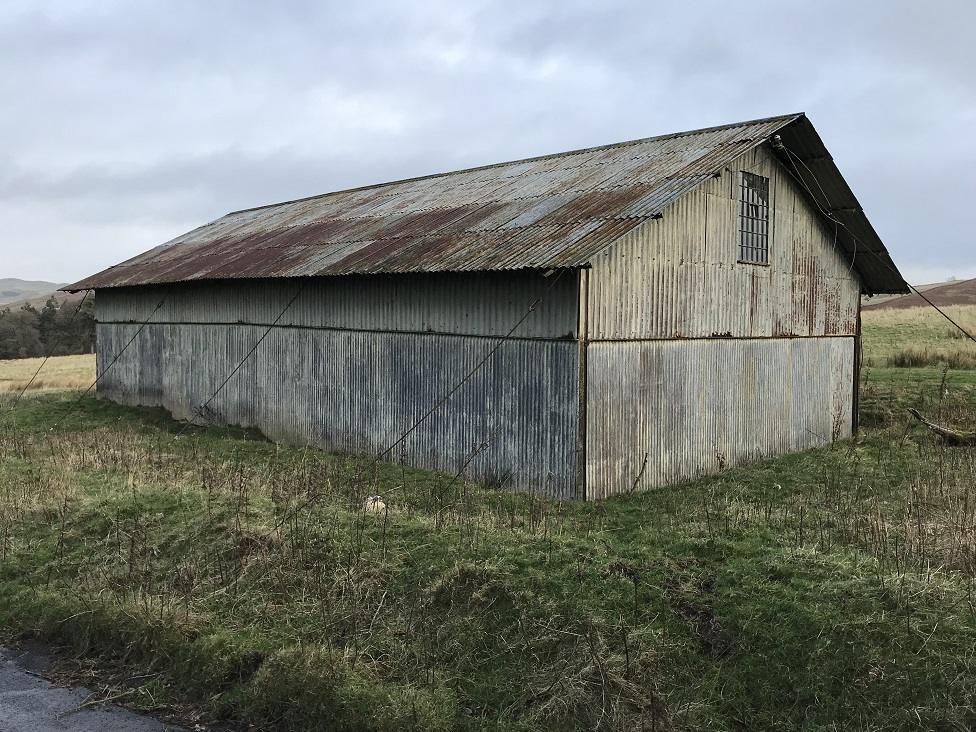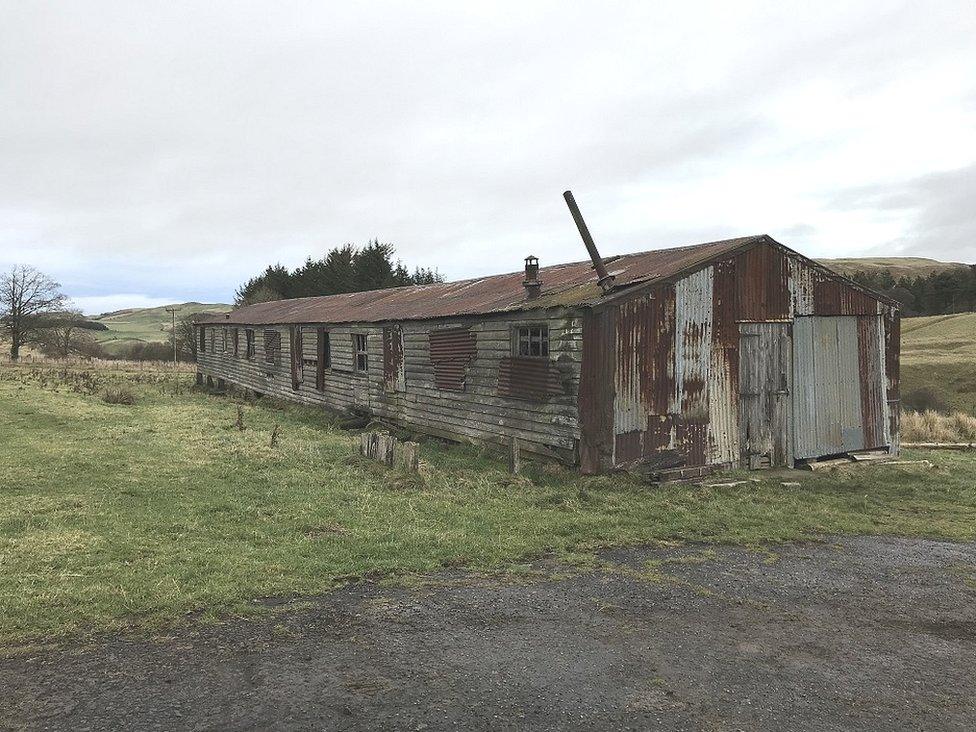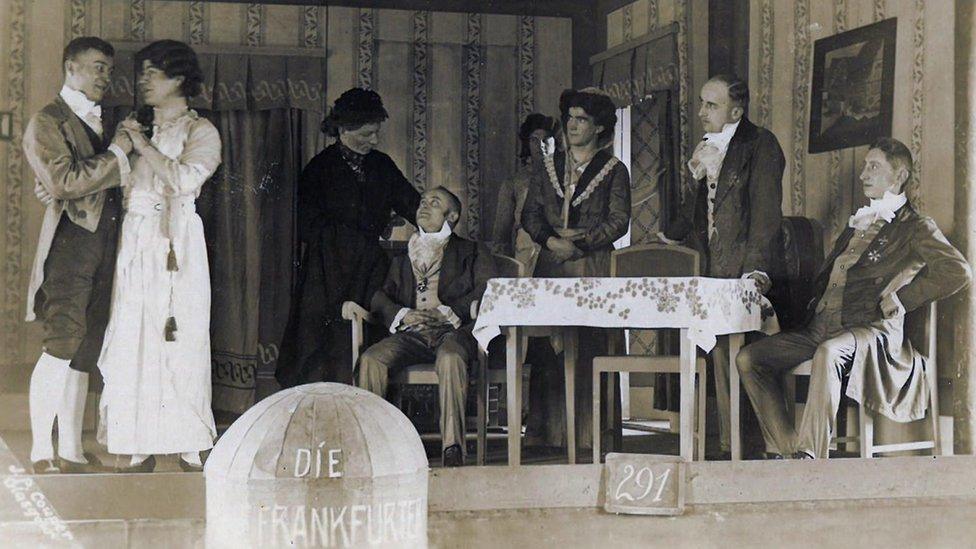National importance of Stobs Camp near Hawick to be marked
- Published

Historic Environment Scotland is looking at helping to preserve the site for future generations
An old military camp in the Borders could soon have its key features recognised as scheduled monuments.
Historic Environment Scotland (HES) is seeking public views on the proposals to recognise the national importance of Stobs Camp near Hawick.
The site was used for military training, civilian internment and as a prisoner of war camp.
HES said it was an "outstanding monument" to Scotland's role in the two great conflicts of the 20th Century.

At one stage there were more troops at the camp than people living in nearby Hawick
The Stobs Estate was originally purchased by the War Office in 1902, with the aim of having a permanent training base and barracks for one of the Army Corps.
Within months of its creation, nearly 20,000 troops had been through the camp and it was dubbed "Scotland's Aldershot".
The camp was actually larger than the population of Hawick - which at the time was about 17,000.
The most important parts of what remains at the original site are now being considered for designation as scheduled monuments.

Views are being sought on having key parts of the site recognised as scheduled monuments
That includes the remains of the camp, World War One training trenches and firing ranges and a World War Two tracked target range for tanks that is unique to Scotland.
Stobs is also home to the last surviving example of a WWI prisoner of war accommodation hut, that is still in its original location, in the UK.
Dara Parsons, head of designations at HES, said the camp gave a "unique insight" into the experience of those who served in the British military, civilian internees and prisoners of war.

A consultation on the proposals runs until early March
"Designating a site as a scheduled monument is a way through which we can recognise and celebrate what makes this heritage special, along with ensuring it's protected for future generations," he said.
"We're keen that the people have an opportunity to have their say as a part of this process and are encouraging anyone with an interest in Stobs Camp to take part in our consultation."
The public consultation runs until 2 March and can be accessed online. , external
Related topics
- Published27 February 2018
